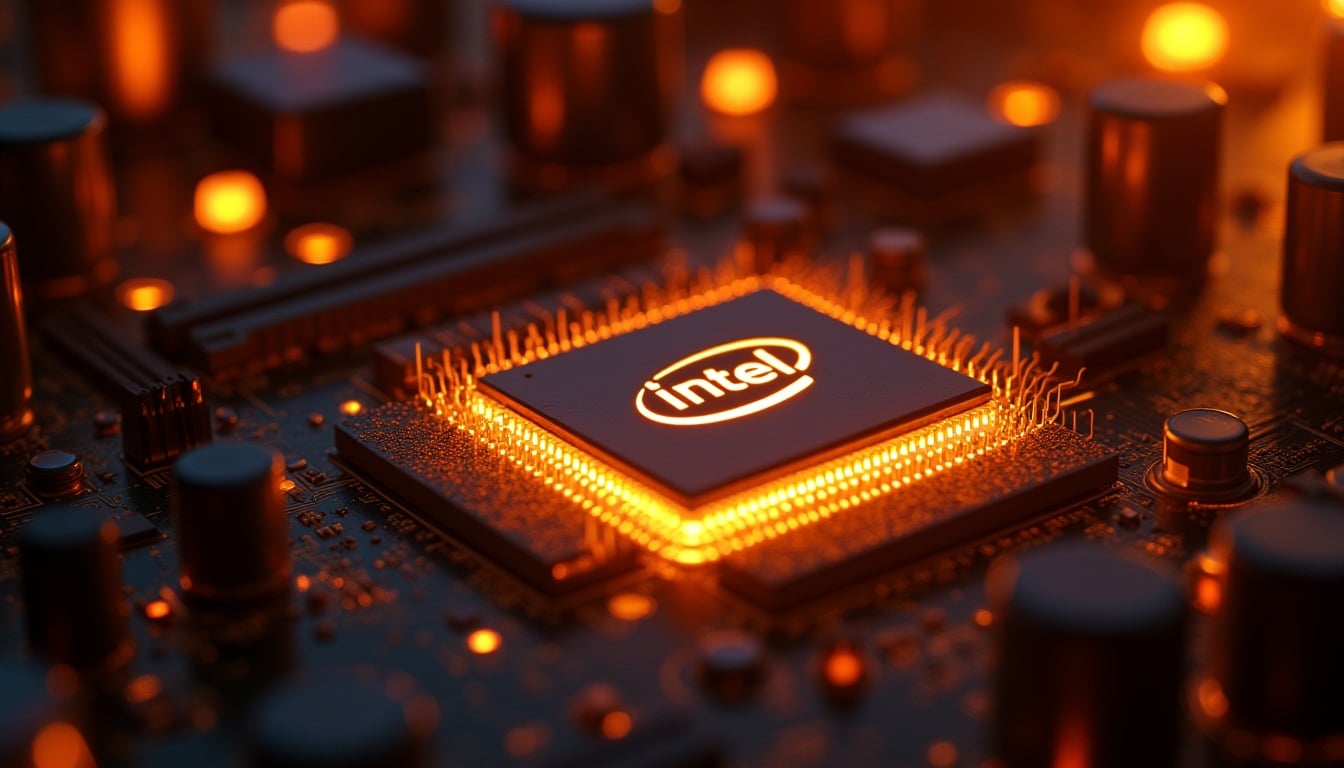Intel Corporation announced an unprecedented deal with the Trump administration that redefines the relationship between the U.S. government and one of the world’s largest semiconductor manufacturers. Washington will invest $8.9 billion in common stock of Intel, securing a 9.9% stake in the company and solidifying its strategy to repatriate critical technology production.
The operation, described as “a decisive step for U.S. technological leadership,” adds to previous investments made under the CHIPS and Science Act and the Secure Enclave program, bringing total government support to $11.1 billion.
A move with significant geopolitical and economic implications
The deal isn’t happening in a vacuum. The semiconductor industry has become a field of geopolitical competition, especially between the United States and China. The Trump administration aims to reduce reliance on Asia for advanced chip manufacturing and to fortify the supply chain against future crises.
Lip-Bu Tan, current CEO of Intel, summarized it clearly:
“As the only company combining R&D and advanced logic manufacturing on U.S. soil, we are deeply committed to ensuring that the world’s most advanced technologies are made in the USA.”
The Department of Commerce highlighted that this capital injection strengthens national security while boosting American industry competitiveness in artificial intelligence and high-performance computing.
How the investment is structured
The U.S. government will purchase 433.3 million shares at $20.47 each, a price below current market value, giving taxpayers a strategic stake under favorable conditions.
The agreement also includes an additional purchase option: a five-year warrant allowing the government to acquire an extra 5% of the capital if Intel loses majority control of its foundry business.
In a move aimed at boosting market confidence, the administration commits not to interfere with management: it will not have board representation or special governance rights and will vote in line with management recommendations, with limited exceptions.
Intel’s investment muscle in the U.S.
Over the past five years, Intel has allocated $108 billion to capital investment and $79 billion to R&D—mostly to expand manufacturing capacity in the U.S.
Currently, the company is executing a plan exceeding $100 billion, centered around a new mega-complex in Arizona. These facilities, scheduled for large-scale production by late 2025, incorporate the most advanced semiconductor manufacturing technology ever deployed on U.S. soil.
Industry reactions
The announcement has garnered support from major tech giants:
– Satya Nadella (Microsoft): “Our partnership with Intel has marked the history of American innovation. This agreement reinforces that commitment and prepares us for the next generation of cloud and AI.”
– Michael Dell (Dell Technologies): “We need a strong and resilient semiconductor industry in the U.S. Intel is the key piece, and this deal proves it.”
– Enrique Lores (HP): “Domestic manufacturing of advanced chips is essential for future innovation and to ensure the country’s digital security.”
– Matt Garman (AWS): “Semiconductors are the foundation of AI. This pact with Intel is an investment in America’s technological and economic future.”
A strategic shift for Intel
The deal also supports Lip-Bu Tan’s leadership, who took on the CEO role in March with the goal of reversing years of setbacks and restoring dominance against rivals like TSMC, Samsung, and NVIDIA.
With this infusion, Intel gains the financial breathing room to implement its roadmap: revitalizing its engineering culture, scaling national manufacturing, and positioning as a strategic partner for the cloud and AI giants.
Risks and open questions
While called a “historic” agreement, the operation is not without risks. Intel faces a fierce competitive market with rapid technological changes. Additionally, the government’s role as a shareholder raises questions about future corporate autonomy versus national priorities.
Meanwhile, the geopolitical context adds uncertainty: technological rivalry with China, the war in Ukraine, and tensions in the Middle East could impact global supply stability.
Conclusion: a pact that signifies a new era
The U.S. government’s entry into Intel’s ownership is more than a financial move; it’s a strategic step to secure technological sovereignty. It marks a turning point in public-private relations within a critical sector of the global economy.
Time will tell if this support helps Intel regain its leading edge and if, through this, the U.S. consolidates its leadership in the global chips race.
Frequently Asked Questions (FAQ)
1. What does it mean that the U.S. government is a shareholder of Intel?
It will hold a 9.9% stake with no management rights or board seat, ensuring a passive investment.
2. How much has Intel already invested in the U.S.?
Over $108 billion in capital and $79 billion in R&D in the last five years.
3. What role does this deal play in global semiconductor competition?
It reinforces U.S. efforts to reduce dependence on Asia and strengthen domestic industry against rivals like TSMC, Samsung, and NVIDIA.
4. When will the new Arizona factory begin production?
It is scheduled to start large-scale production by late 2025.
Source:

